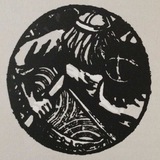The Bishop and the Maid
According to an account¹ published in 1863, a traveling man had talked to the locals near the ruins of the bishop's castle in Kuusisto and heard a story about how the bishop had raped a maid.
It is not known which bishop they referred to, but judging by the behavior of numerous other bishops and priests in those days, it is highly unlikely that it was the only time something like that happened there.
The castle had laid in ruins for well over three centuries when our traveler came along, but the people had not forgotten.
The earliest mention of a bishop in Kuusisto is from the time of Bishop Magnus I in 1295 CE, but the first stone buildings were built by Ragvald II (bishop between 1309 – 1321 CE). There were a few disastrous fires and several renovations and expansions over the centuries, but only after Magnus II Tavast (bishop between 1412 – 1450 CE) had the place properly fortified did people start calling it a castle.
In 1528 CE Gutav Wasa had the place demolished to prevent the Catholics from using it.
____
¹) Sanomia Turusta, n:o 15, 1863. 🔗
[ Wäinölä 🇫🇮 ]
According to an account¹ published in 1863, a traveling man had talked to the locals near the ruins of the bishop's castle in Kuusisto and heard a story about how the bishop had raped a maid.
It is not known which bishop they referred to, but judging by the behavior of numerous other bishops and priests in those days, it is highly unlikely that it was the only time something like that happened there.
The castle had laid in ruins for well over three centuries when our traveler came along, but the people had not forgotten.
The earliest mention of a bishop in Kuusisto is from the time of Bishop Magnus I in 1295 CE, but the first stone buildings were built by Ragvald II (bishop between 1309 – 1321 CE). There were a few disastrous fires and several renovations and expansions over the centuries, but only after Magnus II Tavast (bishop between 1412 – 1450 CE) had the place properly fortified did people start calling it a castle.
In 1528 CE Gutav Wasa had the place demolished to prevent the Catholics from using it.
____
¹) Sanomia Turusta, n:o 15, 1863. 🔗
[ Wäinölä 🇫🇮 ]
“The eagle, bird of the air
said: ‘Don’t you worry at all!
Get up on my back
rise upon my wingbone tips!
I’ll carry you from the sea
where you have a mind to go.
I still remember that day
and think of the better time
when you cleared Kaleva’s trees
and slashed Osmo-land’s backwoods:
you left a birch tree growing
a fine tree standing
for birds to rest on
for me to sit on.’”
— #Kalevala 7:89–102
(Bosley translation)
Illustration based on a line drawing by Heljä Lahtinen (1958). Stylized and colorized for Kalevala Day 28.2.2024.
[ Wäinölä 🇫🇮 ]
said: ‘Don’t you worry at all!
Get up on my back
rise upon my wingbone tips!
I’ll carry you from the sea
where you have a mind to go.
I still remember that day
and think of the better time
when you cleared Kaleva’s trees
and slashed Osmo-land’s backwoods:
you left a birch tree growing
a fine tree standing
for birds to rest on
for me to sit on.’”
— #Kalevala 7:89–102
(Bosley translation)
Illustration based on a line drawing by Heljä Lahtinen (1958). Stylized and colorized for Kalevala Day 28.2.2024.
[ Wäinölä 🇫🇮 ]
Forwarded from Balto-Finnic Heritage ⌘
Mielikki is the Finnish goddess of forests and the hunt. She is referred to in various tales as the wife of Tapio and is said to have played a central role in the creation of the bear.
Mielikki is known as a skillful healer who heals the paws of animals who have escaped traps, helps chicks that have fallen from their nests, and treats the wounds of wood grouses after their mating displays. She knows well the healing herbs and will also help humans if they know to ask her for them.
Mielikki is also known for her beauty and is associated with housework, domestic affairs, and beauty. She is characterized as more gentle-minded than her husband Tapio but at the same somewhat mischievous.
Mielikki is known as a skillful healer who heals the paws of animals who have escaped traps, helps chicks that have fallen from their nests, and treats the wounds of wood grouses after their mating displays. She knows well the healing herbs and will also help humans if they know to ask her for them.
Mielikki is also known for her beauty and is associated with housework, domestic affairs, and beauty. She is characterized as more gentle-minded than her husband Tapio but at the same somewhat mischievous.
Forwarded from Balto-Finnic Heritage ⌘
Jarle Hagan's Documentary Style Portraits of the Sámi People of Norway
Forwarded from Balto-Finnic Heritage ⌘
“Suns may rise and set in Suomi, Rise and set for generations, When the North will learn my teachings, Will recall my wisdom-sayings, Hungry for the true religion. Then will Suomi need my coming, Watch for me at dawn of morning, That I may bring back the Sampo, Bring anew the harp of joyance, Bring again the golden moonlight, Bring again the silver sunshine, Peace and plenty to the Northland.”
Kalevala, Rune 50
Kalevala, Rune 50
Residents of Hiiumaa (Finnish: Hiidenmaa), the second largest island in Estonia. 🇪🇪
Painting by E. H. Schlichting (1852).
[ Wäinölä 🇫🇮 ]
Painting by E. H. Schlichting (1852).
[ Wäinölä 🇫🇮 ]
Residents of Hiiumaa (Finnish: Hiidenmaa), the second largest island in Estonia. 🇪🇪
Painting by E. H. Schlichting (1852).
[ Wäinölä 🇫🇮 ]
Painting by E. H. Schlichting (1852).
[ Wäinölä 🇫🇮 ]
